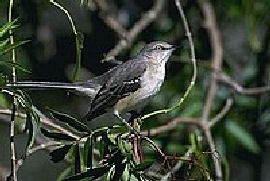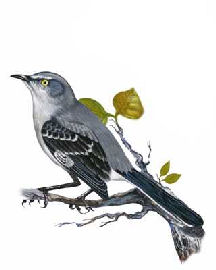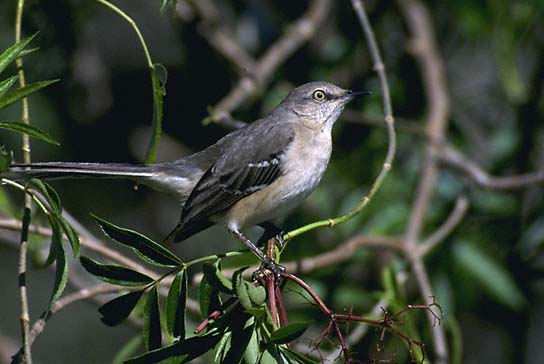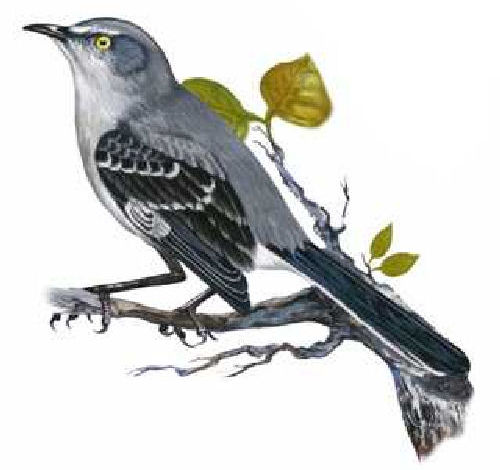Perching Birds
Description
9-11" (23-28 cm). Robin-sized. A slender, long-tailed gray bird with white patches on wings and tail.
Habitat
Residential areas, city parks, farmlands, open country with thickets, and desert brush.
Discussion
This bird's beautiful song is richest on warm, moonlit nights in spring, when the bird may spend hours giving amazing imitations of other species. The songs of 36 other species were recognized from the recording of one mockingbird in Massachusetts. Birds in the western part of the species' range have less musical songs and are less imitative. Mockingbirds are strongly territorial and, like a number of other birds, will attack their reflection in a window, hubcap, or mirror, at times with such vigor that they injure or kill themselves. At mating time, the male Northern Mockingbird becomes increasingly exuberant, flashing his wings as he flies up in an aerial display, or singing while flying from one song post to another. After breeding, each parent establishes and vigorously defends its own winter territory. Mockingbirds require open grassy areas for their feeding; thick, thorny, or coniferous shrubs for hiding the nest; and high perches where the male can sing and defend his territory.




